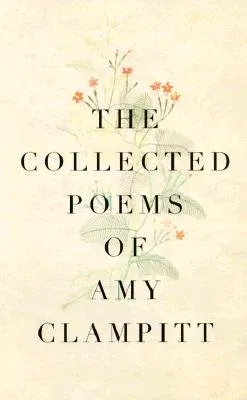Now, for the first time, Clammpitt's five poetry collections are
brought together in a single volume, allowing us to experience anew the
distinctiveness of her voice: the brilliant language--an appealing mix
of formal and everyday expression--that poured out with such passion and
was shaped in rhythms and patterns entirely her own. - With a foreword
by Mary Jo Salter
The Collected Poems offers us a chance to consider freshly the breadth
of Amy Clampitt's vision and poetic achievement. It is a volume that her
many admirers will treasure and that will provide a magnificent
introduction for a new generation of readers.
When Amy Clampitt's first book of poems, The Kingfisher, was published
in January 1983, the response was jubilant. The poet was sixty-three
years old, and there had been no debut like hers in recent memory. "A
dance of language," said May Swenson. "A genius for places," wrote J. D.
McClatchy, and the New York Times Book Review said, "With the
publication of her brilliant first book, Clampitt immediately merits
consideration as one of the most distinguished contemporary poets."
She went on to publish four more collections in the next eleven years,
the last one, A Silence Opens, appearing in the year she died.
Amy Clampitt's themes are the very American ones of place and
displacement. She, like her pioneer ancestors, moved frequently, but she
wrote with lasting and deep feeling about all sorts of landscapes--the
prairies of her Iowa childhood, the fog-wrapped coast of Maine, and
places she visited in Europe, from the western isles of Scotland to
Italy's lush countryside. She lived most of her adult life in New York
City, and many of her best-known poems, such as "Times Square Water
Music" and "Manhattan Elegy," are set there.
She did not hesitate to take on the larger upheavals of the twentieth
century--war, Holocaust, exile--and poems like "The Burning Child" and
"Sed de Correr" remind us of the dark nightmare lurking in the
interstices of our daily existence.
It is impossible to speak of Amy Clampitt's poetry without mentioning
her immense, lifelong love of birds and wildflowers, a love that
produced some of her most profound images--like the kingfisher's
"burnished plunge, the color / of felicity afire," which came "glancing
like an arrow / through landscapes of untended memory" to remind her of
the uninhabitable sorrow of an affair gone wrong; or the sun underfoot
among the sundews, "so dazzling / . . . that, looking, / you start to
fall upward."

